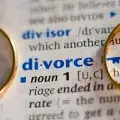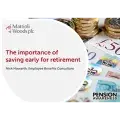As part of Gifts in Wills month, John Kelly looks at the important issues to consider as we move towards retirement, including the levels of income you need, where you should invest your money to provide returns to support your income, and leaving a legacy to your loved ones. Dementia is one area which can affect some of these decisions and they are some of the most important decisions an individual may make. Due to health issues, an individual may have trouble in implementing their aims, objectives and wishes.
Vulnerable clients, who are they?
When an individual takes financial advice, an adviser needs to consider whether they are classed as a vulnerable client. A client can be considered vulnerable for several reasons, such as:
-
they could be anyone who (by virtue) are of poor health, age or circumstances, or may be less able to realistically, objectively identify and prioritise their own needs
-
fully understand the risk, cost or implications of any advice provided
-
assess information in their usual format, e.g. verbally during meetings or visually in respect to written advice
Examples of vulnerable clients could be:
-
elderly people
-
individuals of poor health
-
those with sensory issues, e.g. visual sight, speech, or hearing
-
those with limited mental capacity or certain learning difficulties
-
those who have gone through major life changes, e.g. divorce, loss of job
These are just a few examples, which is why it is important to assess a client’s full situation to understand whether they may be, or have the potential to be, a vulnerable client.
Our client case study
To give an example of some of the issues that face vulnerable clients, a real-life example is as follows. The case highlights a particular common situation and is an example of the many IHT conundrums we regularly face.
The client concerned has lived in London, in the same house for the last 30-40 years. She has always been in good health and has had a very active social life. She has been widowed for the last ten years and has always been involved, and has had a good understanding, of her situation with regard to her income needs, where her investments were held and the growing value of her property for inheritance tax (IHT) considerations. She has always understood that her capital and income sources would provide for her outgoings, and that she would continue to live in her family home, and her loved ones would receive an inheritance following the sale of her house after she passes away. She had not put in place any specific planning to deal with IHT due to the lack of liquidity of the main asset.
Specifically, the client had the following assets in addition to her property:
| Assets | Value (£) |
| Pension Scheme | 398,142 |
| Individual savings account | 55,168 |
| Other investments | 43,215 |
| Investment bond | 160,946 |
| Cash | 250,000 |
| Total | £907,471 |
With regard to her income, including State Pension, other pensions and investment income, this totalled around £3,000 per month gross of income tax, and the client would draw from her cash if she required any further monies to cover her outgoings. Her outgoings were in the region of £30,000 per annum. Over time, the client started to suffer from memory loss, and this culminated in a test for dementia, for which she was diagnosed as having. As she lived on her own, there was a danger to herself for her general living. There was a recommendation for her to be moved into a home, and her London residence was eventually sold for around £3 million.
Moving into a care home, in London, meant that fees were around £95,000 per annum, and the sale of the property and the income would provide for the long-term funding of the care home. It was clear that there was an excess amount over and above the care home fees to sustain these for several years.
What became apparent was that, after the house had been sold, there were liquid assets of approximately £3.25 million on which IHT could be paid if she were to pass away. As the client had no children, the only IHT allowance would be her nilrate band and her late husband’s nilrate band. As there were no direct descendants, they would not be able to take advantage of the residence nilrate band, and due to the size of the estate, any residence nilrate band would have been reduced in any event.
In normal circumstances, the client would look to make some gifts to her wider family to look to save IHT.
Powers of attorney
The client’s two sisters had been appointed as attorneys to look after her affairs. While the client was diagnosed with dementia, she still had some understanding of the issues at hand and wanted to ensure she had enough income to live off, and to pay the care home fees. She was also aware that a large part of her estate would be paid to HM Revenue & Customs as an IHT tax charge, and this was estimated to be a staggering £1,040,000 if she died without reducing the value of her estate.
Powers of attorney enabled the client’s sisters to make health and wealth decisions for the client, and therefore, they were able to appoint an investment manager to continue to look after the client’s investment monies to continue to grow these, and to help with the future care home fees. However, due to the size of the estate, the conversation turned to IHT strategies, however powers of attorney do not allow the sanction of any gifts or IHT planning. If any planning was to be done, they would need to contact the Court of Protection for them to allow any planning in this area.
This is not a simple process and involves assessing the likelihood of the Court of Protection allowing any gifts. Before applying to the Court of Protection, after seeking legal advice, it was recommended that a test could be undertaken to ascertain the client’s understanding of IHT and the implications of this in a consultation with a medical professional, to see if the client could decide on her own to do some planning, and if she was capable of doing this before contacting the Court of Protection.
As you would imagine, this was not a short process, and is still ongoing with appointments booked with a medical professional to discuss IHT planning, so the final outcome is still unknown and may be for some time.
IHT
There are several ways of reducing the impact of IHT, and these involve outright gifts, gifts into trusts, life cover to pay for the IHT bill, and business relief schemes to reduce the impact of IHT.
A brief summary of these is:
Gifting assets away
One way of mitigating IHT is to gift assets away until your total wealth is below the IHT threshold. Clearly, this is not a practical solution for everyone, but it may be worth considering some gifts to reduce IHT. Also, gifts can be made out of normal expenditure, with specific rules surrounding this. Generally, gifts may be outside of the estate after a 7-year period using the Potentially Exempt Transfer rules. Of course gifts of £3,000 per annum can be made and is one of the IHT exemptions available.
Using trusts
Using IHT-efficient trusts could provide a large part of your strategic planning. A benefit of trusts is where they allow trustees (including you) to stay in control of the assets. Trusts also prevent the assets being paid directly to the beneficiaries at a time in their life you feel is inappropriate. The trust could benefit children and grandchildren, for instance during your lifetime by making advances from the trust. Some trusts can build in an income stream however there are different trust solutions available, and the one chosen would depend on the amount of control, access and income required.
Packaged solutions
There are a number of tax-efficient, packaged solutions that can reduce the impact of IHT. Some of the more complex schemes may involve payments to the alternative investment market (AIM) using a bespoke share portfolio, and this will need to be considered in line with your attitude to risk and time horizon for the investments. The risk of investing in small company shares must be considered in the context of favourable tax savings, which can provide relief against IHT, typically in the case of utilising business relief after two years.
There are certain companies listed on the AIM that qualify for business relief, which allow them to be free of IHT once they have been held for two years. AIM is the junior exchange of the London Stock Exchange containing smaller UK-based companies than can be found on the main UK exchange. Therefore, these companies are subject to a higher degree of volatility and are exposed to a greater degree of risk than large, more established companies. Many of the companies listed on AIM do not pay a dividend, instead providing the prospect of long-term investment growth.
Insuring the IHT liability
One way of paying for the IHT liability is to take out a life policy to cover the whole IHT liability to be paid. The policy would be written under trust, so the monies would be payable to any beneficiaries in order for the tax to be paid quickly, and without the need to encash investments or property to release the estate from probate. Many people see this as an advancement of their estate in a tax-efficient manner, as premiums will be paid to purchase the appropriate level of cover and may be within the annual gift allowance. When you look at the actual return paid, compared to the premiums paid, it may be a cost-efficient way of dealing with IHT depending on variables such as age and health.
In reality a combination of the above options can be the most appropriate. Estate planning is a complex matter, usually made more so by the complexities of being fair to each member of the family and taking the income needed to maintain your living standards into account. Generally, IHT planning should not be at the detriment of your own lifestyle and therefore, it is important to develop a strategy to suit your lifestyle and achieve the efficient passing of assets to the family following your death.
Therefore, planning to reduce IHT liability depends on how far an individual is prepared to go to achieve the balance between lifestyle and tax mitigation.
Summary
As advisers, we are seeing more and more that individuals do leave IHT planning too late in life, including the logistics of the needs for the income and possibly a good asset base to cover any nursing home fees. Ironically, if an individual has saved all their lifetime and has found they have excess capital in later life, something like dementia may mean they are unable to make choices on how they would like to pass on a legacy to their loved ones. There is no right or wrong answer regarding when you should consider making gifts or deciding on a legacy to be passed to other family members, and this can be documented in a Will. However, the incidence of tax on an estate can make a huge dent in the value of the legacy, and can involve complex planning, which is simply not available given the example of the above.
Consideration should be given earlier in life to how IHT could reduce a legacy, and to consider who you would like to benefit before it is too late to make any personal decisions. A recent article from FT Adviser (20/08/21) reported that IHT receipts increased by a further £0.5 billion last year and this is following the freezing of the nil-rate band rates.
Advisers will take into consideration the client’s individual position and provide several scenarios which could be appropriate to the client at any stage in life. Speaking to advisers at the earliest opportunity to put some plans in place is recommended, even if strategy is not taken up.
The above IHT information is generic and not specific to the case study however the situation is based upon a real-life client and does show some of the issues to be considered in later life in respect of interim investment and IHT planning.
If you would like further information on any of the areas discussed, please contact Mattioli Woods on 0116 240 8700 or visit our website, www.mattioliwoods.com.

































































































































































































